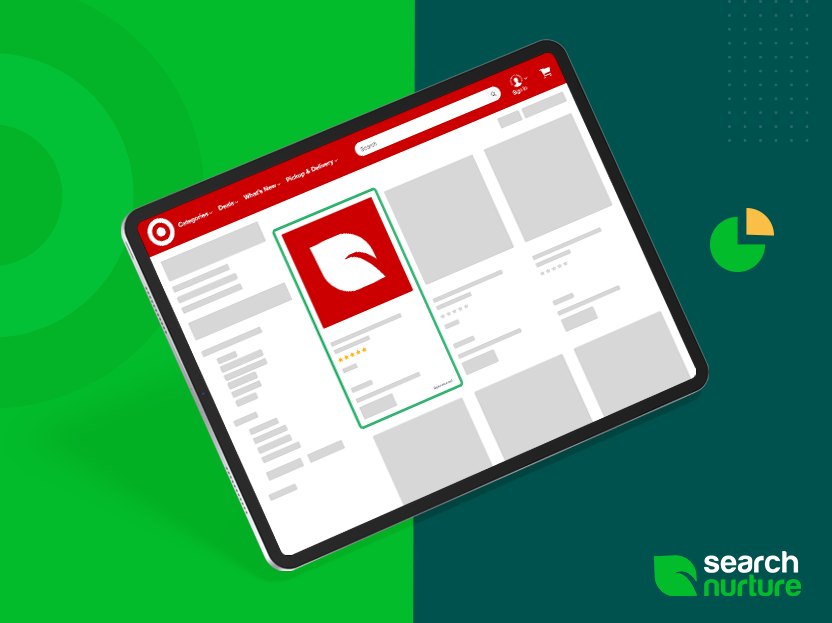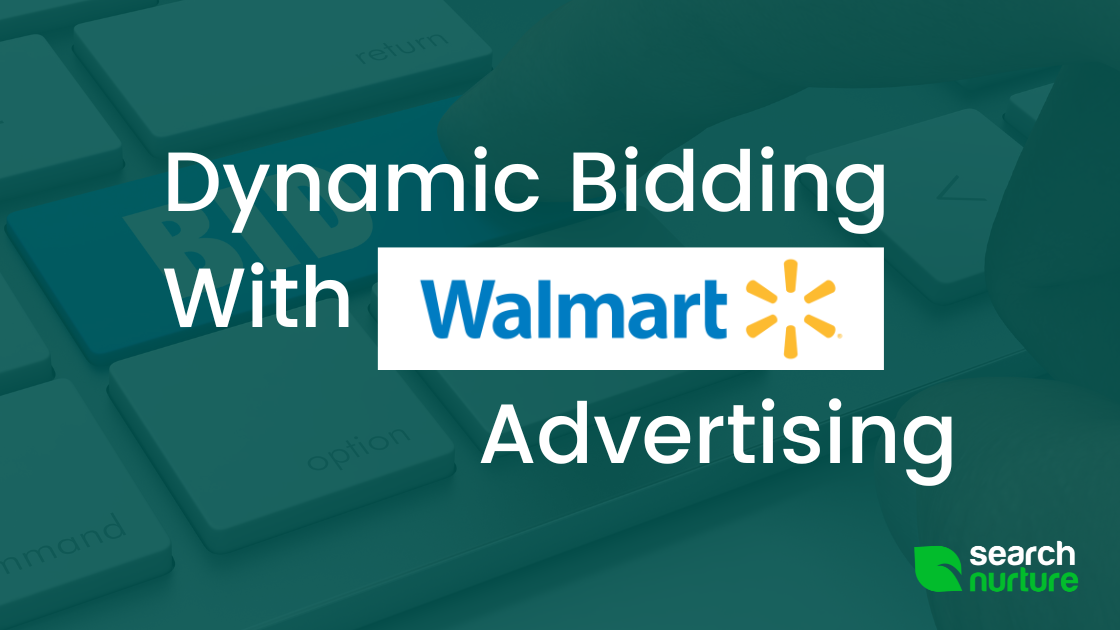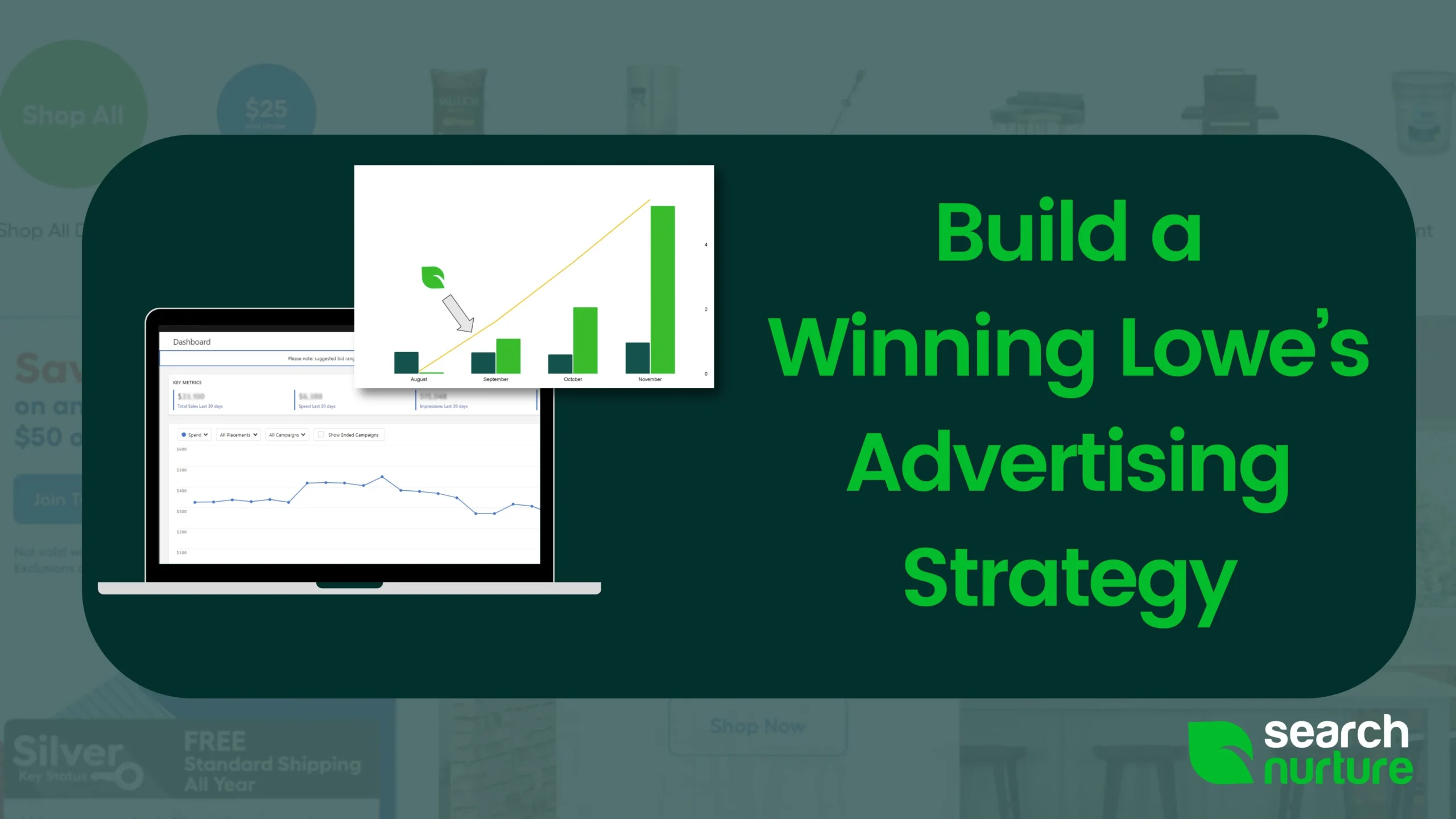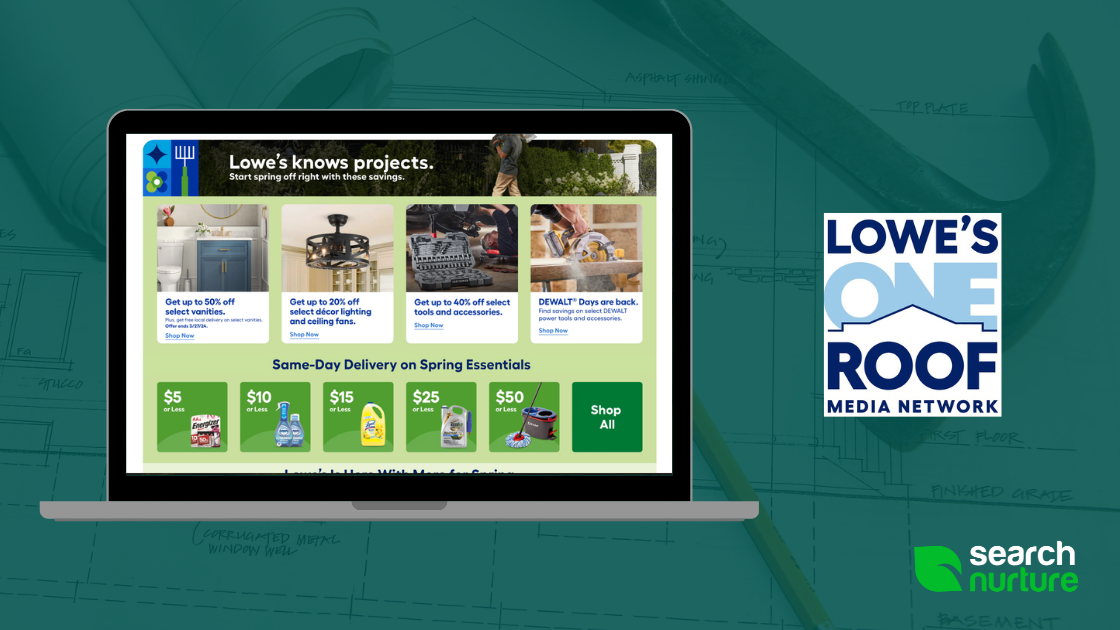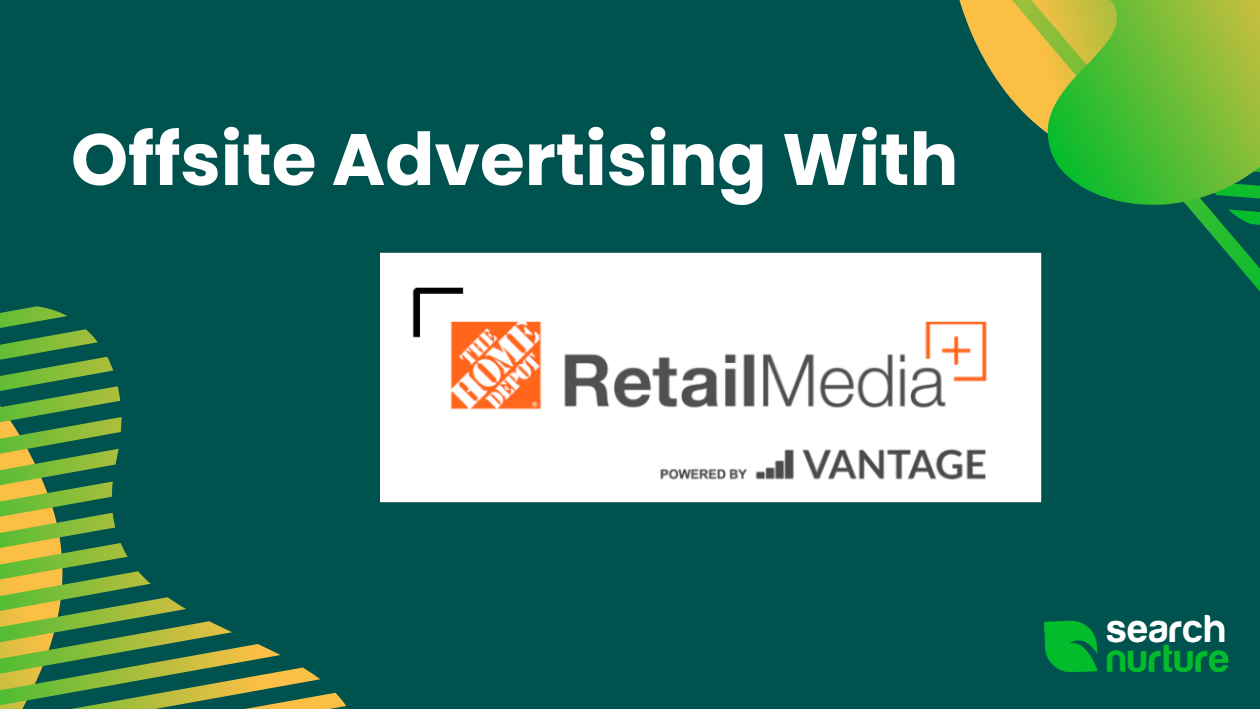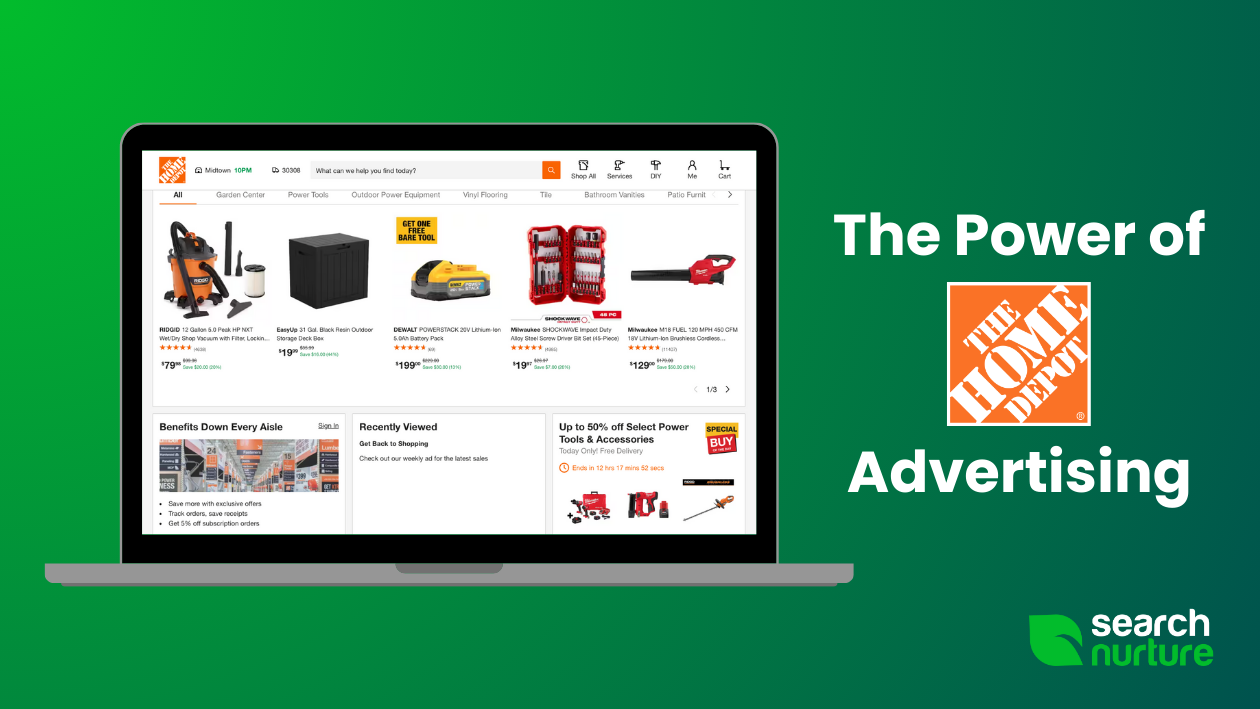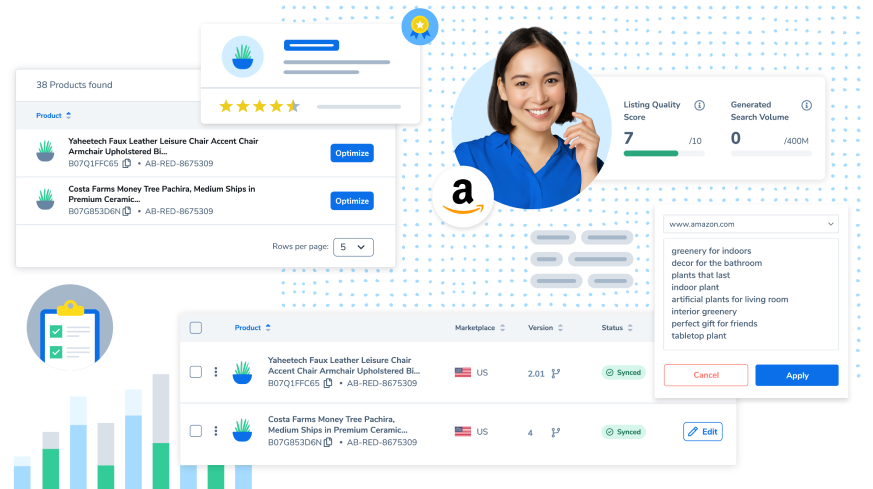The recent eCommerce explosion shows no signs of slowing. Target has emerged as a key brand, with its online sales revenue jumping significantly in 2020 and 2021.
That’s great news for Target and brands interested in learning how to advertise on Target.com. This comprehensive Target advertising guide is designed to help companies with this process.
Table of Contents
Why Should You Advertise With Target Roundel?
Target Roundel Ad Types And Placements
How to Reach New Levels of Exposure With Target Roundel Paid Advertising
What Is Target.com Advertising?
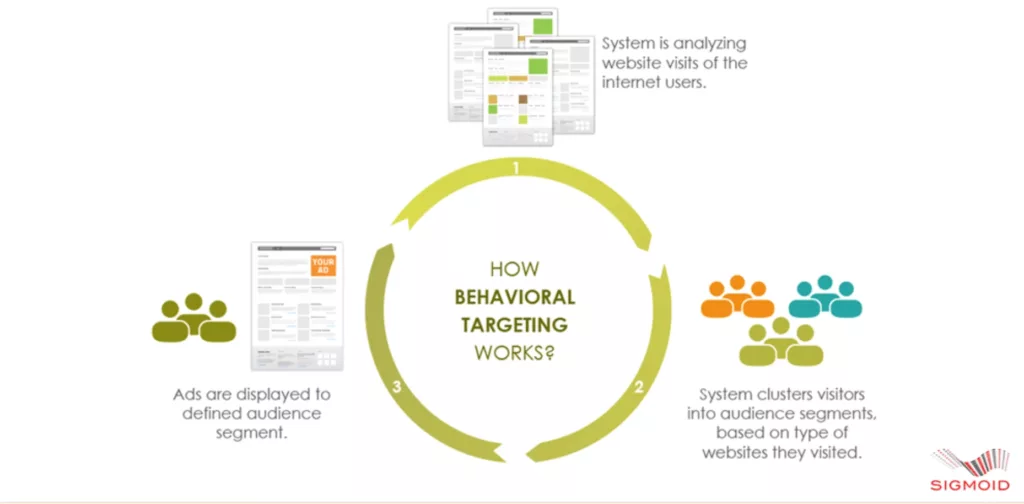
Target.com advertising is a means for third-party sellers to get shoppers’ attention. Brands choose to advertise on the Target website, app, search engines, and partner sites so that their products stand out from those of their competitors.
In 2020, 17.9% of Target’s sales came from its website. That may not seem like a significant number, but that represents an increase in online sales of 118% by the end of the 4th quarter. Online sales have continued to increase since then. That’s made Target a key player in the online sales space.
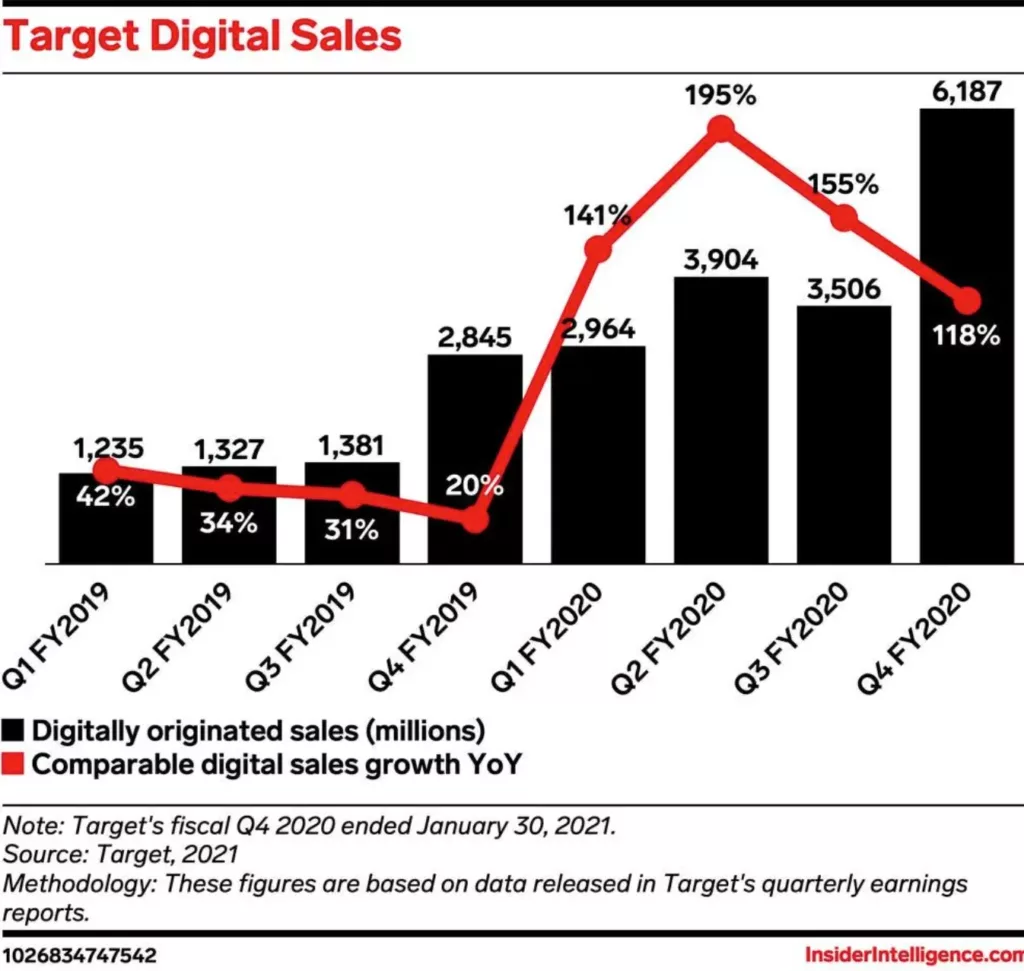
This growth also means that Target.com is highly sought-after by eCommerce brands. As a result, the site has become saturated with products.
Unlike brick-and-mortar spaces, that growth isn’t limited by physical barriers such as shelf space. Because of this, brands that wish to stand out need a solid strategy developed with help from this Target advertising guide.
What Is Roundel?
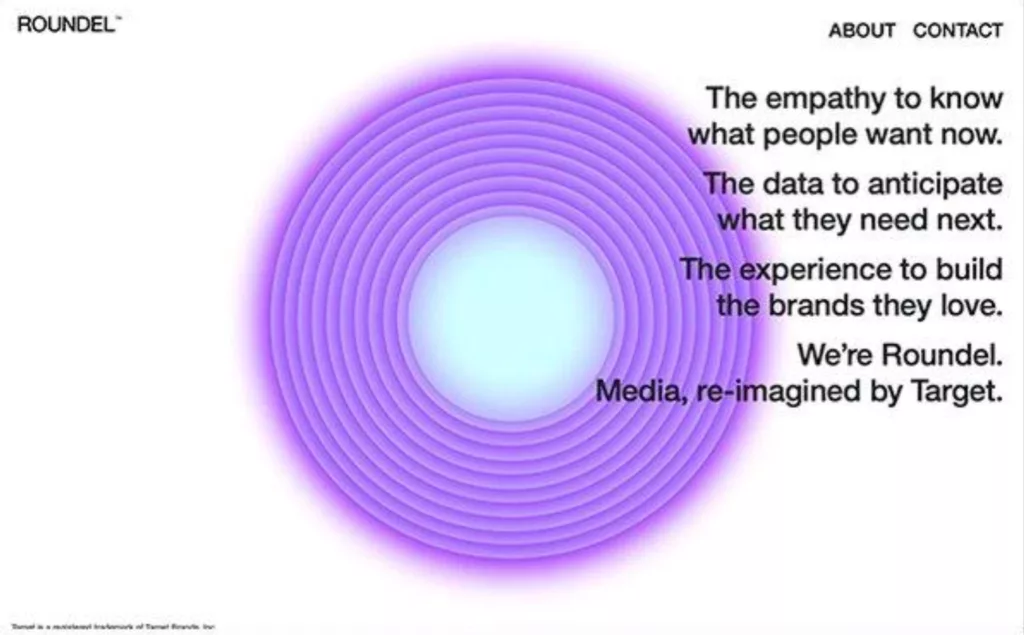
Target has branded Roundel as its internal media company. Roundel was created to provide sellers with data insights, tools, and support to get the best possible results in their efforts to reach customers.
By creating Roundel, Target is gearing up to move into the online marketplace in a way that allows it to compete with Amazon and other giants.
Roundel offers a robust set of tools and resources for brands interested in learning how to advertise on Target.com, but what is retail media? It’s a form of advertising in which brands advertise their products within a particular app, retail website, or online marketplace.
This arrangement is appealing to eCommerce companies because they are able to leverage the power of larger retailers like Target to reach a wider audience. Additionally, brands that use these retail media networks often gain access to tools and data that they can use to reach a wider yet better-targeted audience.
Target isn’t alone in these efforts. Several big box and grocery retailers are moving into the retail media space. Even Instacart has implemented a self-service ad platform for retailers.
Why Should You Advertise with Target Roundel?
Roundel, previously Target Media Network, has partnered with major brands to help them get better results from their advertising efforts. These include Disney and Coca-Cola.
Target Roundel provides companies with data insights to help them boost their advertising campaigns on Target.com as well as other brand-friendly sites. Brands that advertise with Roundel will experience the following benefits:
- Improved ad features
- Increased visibility
- Audience variety
- Audience specificity
- Easy return on ad spend calculation
- Full campaign transparency
Brands that use Roundel to optimize ad campaigns get results. With the help of this Target advertising guide, you may achieve similar results to a major pet foods brand that achieved a campaign ROAS of 437% thanks to Roundel.
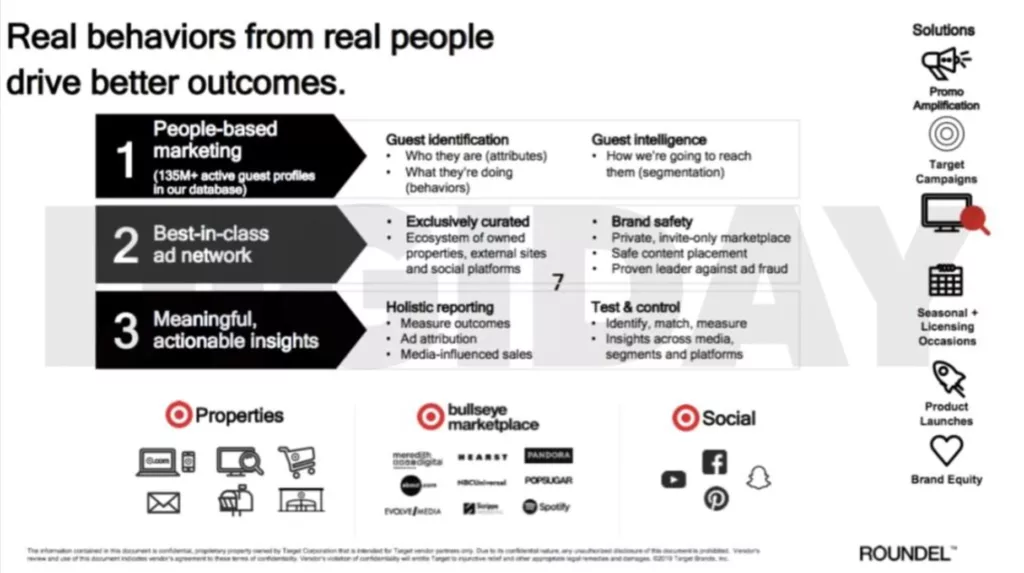
Target Roundel Ad Types and Placements
Target offers brands a selection of five ad types to help them connect with an audience that is most likely to convert. Each ad type is powered by a closed-loop system of measurement that connects ad campaigns with in-store and online sales.
Ad Types
Here’s a description of each ad type to consider when building your Target advertising strategy, along with the benefits and features of each:
Programmatic Ads
Programmatic ads by Target Roundel use first-party data to automate the creation of an advertising strategy. Brands that select this option are able to access Target’s proprietary customer segment data to reach audiences on Target.com or the DSP (Demand Side Platform) of their choice.
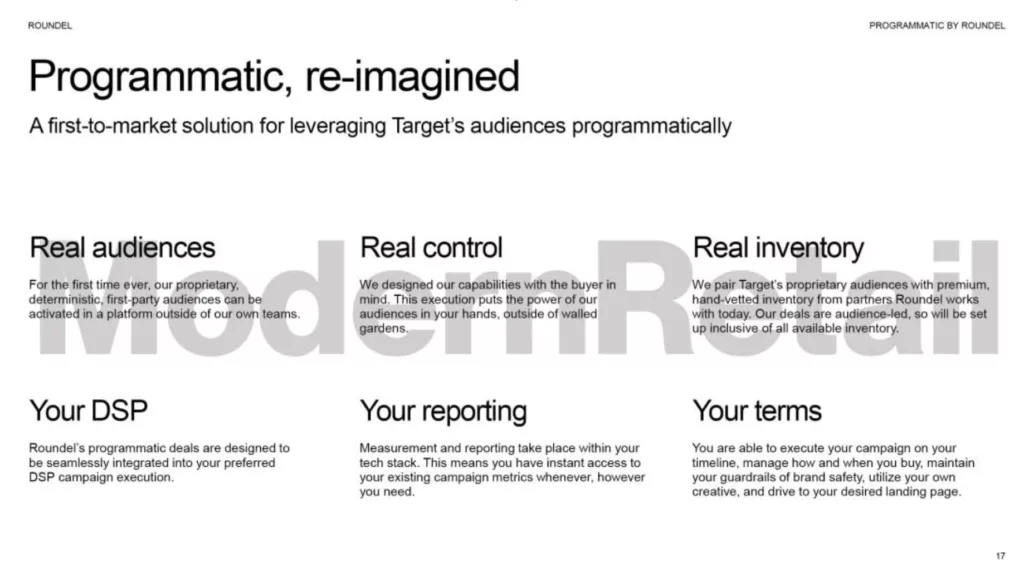
This flexibility means brands can use this option even if they don’t sell products on Target.com, the Target app, or other Target-owned websites. Both display and video ad inventory are available on and off property.
This type of ad will likely become an even more popular option among brands as the death of third-party cookies is looming. eCommerce companies can use Programmatic by Roundel for cookieless targeting. All of this, along with closed-loop measurement and reporting, comes at no minimum investment.
Target Product Ads
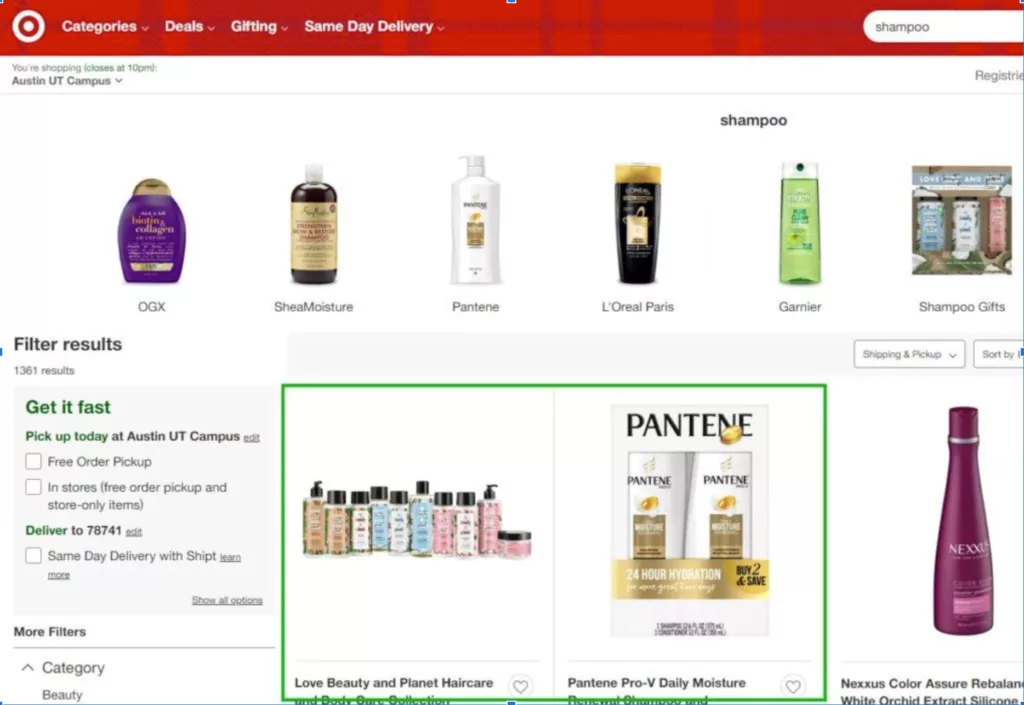
Target product ads are offered to companies that wish to improve their sales on Target.com and the Target app using cost per click (CPC) ads.
This approach will probably be the most familiar ad type for the majority of marketing teams. Most people familiar with retail advertising on Walmart or other platforms won’t experience much of a learning curve here. Sellers will use the following process:
- Choose investment level
- Select products to promote
- Create and organize campaigns
- Go live with ads
- Optimize in real-time
Brands can choose to work with Target’s partners to analyze campaign data and further optimize campaigns or select a fully self-service option, in addition to third-party tools for tracking campaign ad performance. With sales attribution and date reporting, Target advertising guides brands in their efforts to create winning strategies.
Search Ads
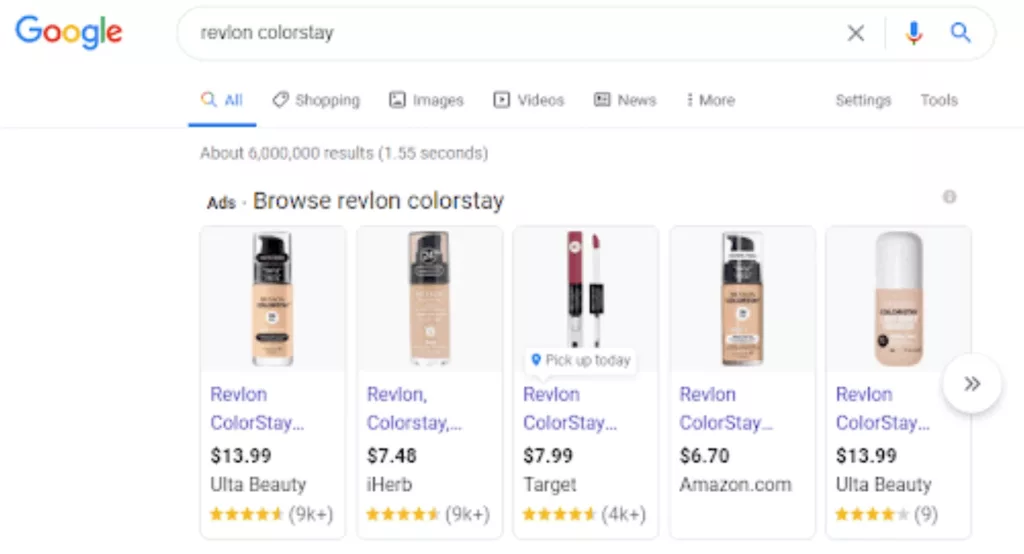
As the name suggests, search ads are PPC advertisements intended to attract customers from Google and other search engine results pages to Target.com for conversion. There are two approaches to consider when developing your Target advertising strategy and selecting search ads offered by Roundel.
The first option available is the in-flight approach, which leverages search to help brands connect with customers at every touchpoint when opportunities are high. Companies that count on seasonal sales or have very specific focal points to generate the majority of their revenue might consider this option.
The second option is the always-on approach. With this choice, each campaign is operated independently. By running these dedicated campaigns, brands can collect useful data all year long.
This setup is the approach that brands will take if they want to improve their campaigns as they go and count on good ROAS throughout the year. The always-on approach is ideal for brands that rely on steady sales revenue throughout the year.
From the point that a customer clicks on a Roundel ad in search engine results, Target begins detailing their buyer’s journey in real-time.
By the time the customer makes a purchase, the seller will receive detailed sales revenue data broken down by product. They can then use this information to better understand their campaign results and continue to optimize them.
Social Ads
The first social media advertising option available is Social by Roundel™. This option allows brands to gain more exposure and influence customer actions on Facebook, Pinterest, Snapchat, and Instagram.
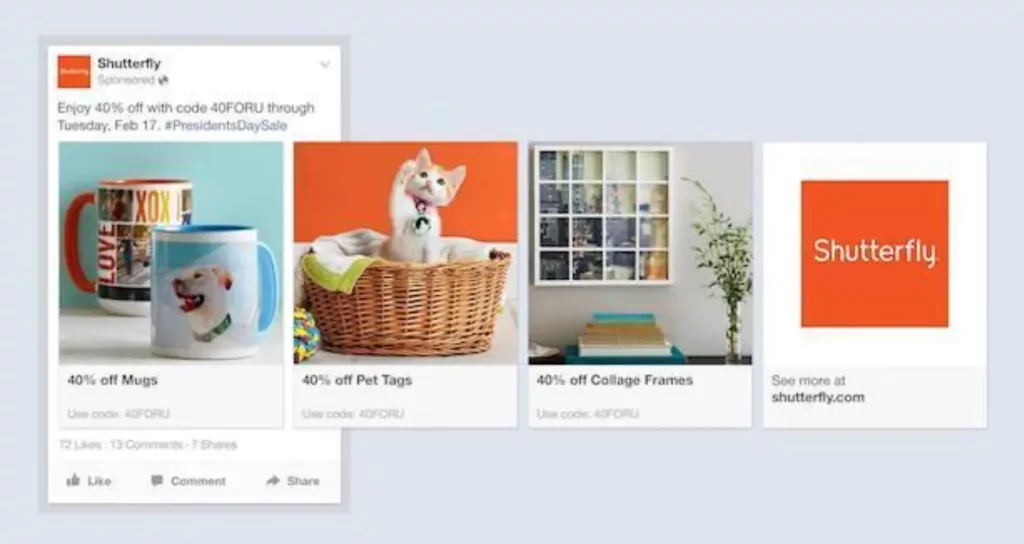
Additionally, brands can build credibility and reach by co-marketing with Target on these popular platforms. Of course, the partnership with Target goes even deeper because customers also have access to both transactional and behavioral consumer data.
Marketing teams that wish to truly increase the power of partnerships should consider Influencers by Roundel™. This program allows brands to team up with influencers from LTK, Target’s influencer network partner. Companies that use influencers in their ad campaigns experience more engagement, reach a wider audience, and increase trust.
Also, because this is a managed partnership, brands don’t get bogged down in the details of content development, execution, or managing influencer relationships. This program is truly a turnkey solution that leaves brands with more time and resources to dedicate to other retail advertising and marketing solutions.
Display Ads
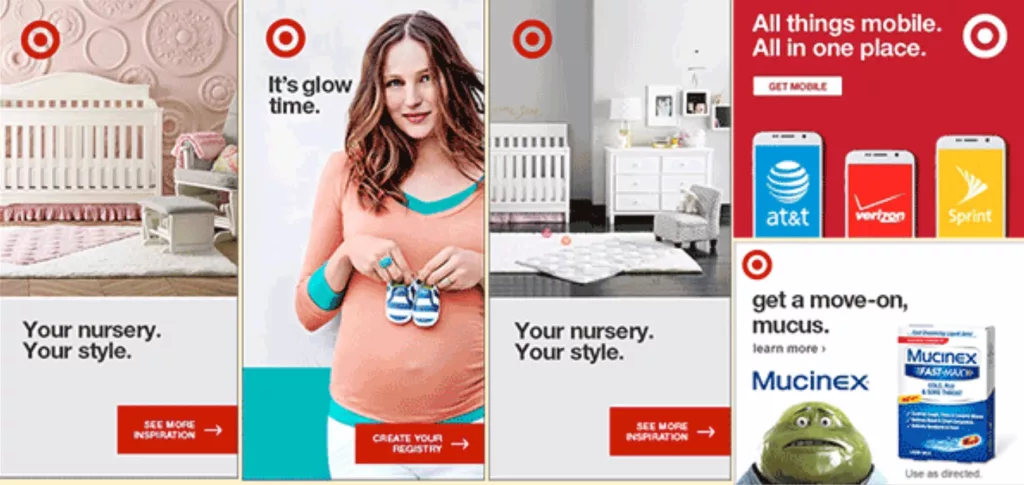
eCommerce brands can buy into display ads to ensure that their products get in front of ideally-targeted audiences on and off the Target.com platform. Advertisers can choose between both premium and standard placement options.
Target display ad campaigns are powered with data obtained from first-party, in-store, and third-party sources. This array ensures targeting with pinpoint accuracy. Display ads appear on Target.com and trusted publisher websites, including USA Today, Vox, and Conde Nast.
How to Reach New Levels of Exposure with Target Roundel Paid Advertising
Target Roundel offers eCommerce brands a suite of advertising options that truly empower them to reach new audiences and get more out of their advertising dollars. That’s just one more reason to choose Target.com as an online marketplace, even if you are already active on Wayfair or other e-Commerce platforms.
However, despite Roundel’s many tools and resources, managing retail ad campaigns on Target.com is an intense undertaking. Brands often find it challenging to create a Target advertising strategy that ensures they are competitive in such a crowded field.
So many companies have expressed interest in learning how to advertise on Target.com. That’s why in addition to this Target advertising guide, we also offer advertising management solutions.
We have partnered with one of Target’s platform partners, Criteo, to bring eCommerce brands an even higher level of service. Contact Search Nurture for more information on achieving your goals with Target Roundel paid ads.


